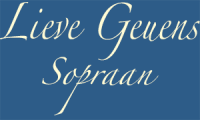This post is written as an extended answer to questions Hyoseon Kim asked about the “lip trill” (or lip roll) exercise.
First off all: You can do the “lip trill” exercise (“brrr”) with or without voice. When you do them without using your voice (without closing your vocal folds), you will most of all train your breath muscles.
A nice detail I guess you like to know:
The way you make your lips vibrate is exactly the same way you make your vocal chords vibrate. (see the first post: “what is this thing called voice”). But since your lips have more mass than your vocal chords, your diaphragm will have to work harder to build up the air pressure when you do the lip-trill…
When you do this exercise, make sure the sound is made with your lips and not with your tongue. Also make sure that the muscles of your jaw, cheek and lips are not tensed and that there is some space between your molars.
When there is too much tension on your lips or on your cheeks you can put some fingers on both sides of your mouth. This will relax the muscles. There is a lot to find on youtube about this lip trill. The presentation on youtube of “Singgeek”: “How to do a lip trill” may help you out when you find problems to do it right. Also vocal coach Dylan could help.
The first time I read about this lip-trill exercise was when I was studying “the nasal method” of Dr. Pahn (I think in 1998). Dr. Pahn was both scientist and singer. In that period more scientists were already working on the idea that semi-occlusion can reinforce breath support and the voice. Semi-occlusion means that you narrow (partly close) the upper part of your vocal tract. You can narrow the last part of your vocal tract with your tongue, lips or with a straw.
This narrowing will give resistance to your breath that wants to flow out. Because of this resistance the air-pressure in your lungs and vocal tract will increase and widen certain places in your throat and therefore change the shape of your vocal tract.
I use the lip trill exercise (with voice) for many purposes.
- With this exercise you train the diaphragm and the other breathing muscles and you develop a good breath support. When you train your diaphragm well, it will be much easier to sing legato. It will be easier to keep a constant air-pressure and airflow.
Singers that have a good breath support, usually have less stress in their throat, larynx and vocal chords. They sing with their “whole body”. When you sing with energy from the whole instrument and not with stress from your throat you will also sing easier from one register to another. To go for example from modal (mode1) to falset (mode 2) you need to tilt the thyroid cartilage smoothly. When there is stress in your larynx nothing will move smoothly…
- Another reason to use this exercise is that it will give a little massage and help to get rid of mucus in the throat and on the vocal chords.
- Also important: This exercise will relax and widen your throat on certain places.
- And very important: the lip trill will put the vocal chords in an optimal shape by squaring them up !! The vocal chords will close much better and with more mass.
As I mentioned above, this lip-trill exercise is a “semi-occlusion” (half closing) exercise.
There are more exercises that work with semi-occlusion.
- There is a method called “the accent method” in which they do exercises with fricatives such as v and z to give resistance to the air you breath out. The narrowing is made by your lips and tongue.
- Also just using your consonants more firmly will already give an effect of semi- occlusion !
- Another way to create semi-occlusion and probably the most effective (!!) is to use a thin straw and sing through it. The thin straw is now the narrow path your voice has to go through. You can also put this straw (or a tube) in water and then you are using the “LAX VOX” method. Lax Vox became very popular the last years…
If you want more information about semi-occlusion and the straw method, go to https://youtu.be/BRJUwQW_3Gs and listen to the explanation the very sympathetic scientist DR. INGO TITZE gives. He was the man who invented that doing exercises with a straw can really help us singers. There are more video’s of him are that really very interesting !
NOTE: When you do exercises with a straw or the “Lax vox” method, make sure that you close your lips well around the straw/tube and listen carefully to your sound to make sure you are not singing with an aspired voice.
It is sometimes difficult to hear if the vocal chords are really closed well when you bubble with a tube in water. Sing first without the tube to make sure you sing in a healthy way. Just imagine you are bubbling all the time with not well closed vocal chords … Thinking you are making your voice stronger… Awww… 🙁
There are more exercises to reinforce your sound, by training the little muscles that close your vocal folds (obliquus, lateralis and transversus). I will tell you later about those exercises…




Plaats een Reactie
Meepraten?Draag gerust bij!